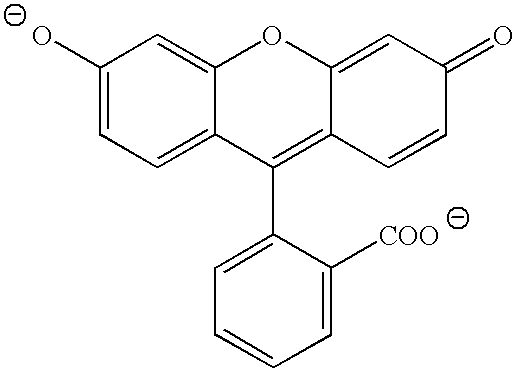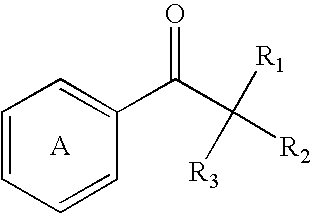Perfumes
- Summary
- Abstract
- Description
- Claims
- Application Information
AI Technical Summary
Benefits of technology
Problems solved by technology
Method used
Image
Examples
example 1
[0211]20% emulsions of the lipids were prepared in a bench-top jacketed mixer using a three-blade impeller at 500 RPM and a process temperature of 50° C. The lipids were heated to −50° C. and added drop-wise into a 1% solution of non-ionic surfactant (Genapol LA 070, ex Clariant). After sufficient mixing the batch was cooled slowly to room temperature and the emulsion decanted into a bottle and further treated in a Silverson high shear homogeniser (one minute mixing at the lowest speed setting).
[0212]Cotton sheeting monitors roughly 20×20 cm were padded with these emulsions in the following manner. A 500 ml glass bottle filled with 200 g of tap water to which 20 or 10 g of the above 20% emulsion was weighed in and shaken. To this a fixed level of photo-bleach was weighed in and shaken. Then two monitors were added and agitated on a roller for some 30 minutes. The monitors then removed and spin dried. From the monitor's dry and wet weight and the concentration of emulsion the amount ...
example ii
[0222]White woven cotton cloth was washed at 20° C. in 2.0 g / L of a base washing powder containing: 18% NaLAS, 73% salts (silicate, sodium tri-poly-phosphate, sulphate, carbonate), 3% minors including fluorescer and enzymes, remainder impurities and water. A liquor to cloth of 30:1 was used, each wash lasted for 30 mins, and was conducted with and without the addition of varying level of Tinolux BBS (a green-blue sulphonated Zn / Al phthalocyanine ex Ciba Speciality chemicals) and acid red 51. The level of dye was quantified by the optical absorption (5 cm pathlength) at 528 nm for acid red 51 and 670 nm for the Tinolux BBS. Following the wash, the cotton cloth was rinsed twice, dried and colour of the cloth was then assessed using a reflectometer (UV excluded for all measurements) and expressed as the hue angle. A hue angle of 180 corresponds to green, a hue angle of 270 to blue and a hue angle of 0 / 360 to red. The results are shown in Table 9 below:
TABLE 9AbsorptionAbsorption (AR51(...
example iii
Exemplary Granular Laundry Formulations A,B,C,D
[0224]
TABLE 10FormulationABCDNaLAS15201014NI(7EO)———10Na tripolyphosphate715——Soap———2Zeolite A24———17Sodium silicate5451Sodium carbonate25203020Sodium sulphate40334022Carboxymethylcellulose0.20.3—0.5Sodium chloride———5Lipase0.0050.01—0.005Protease0.0050.01—0.005Amylase0.0010.003——Cellulase—0.003——Fluorescer0.10.150.050.3Direct Violet 90.00020.00015—0.0001Solvent Violet 13—0.002—0.001Acid red 510.0020.0020.00010.0003Direct violet 54——0.0001—Sulphonated Zn0.0020.0040.00040.0005phthalocyanine photo-bleachprofragance0.11.00.20.4Water / impurities / minorsremainderremainderremainderremainder
PUM
 Login to View More
Login to View More Abstract
Description
Claims
Application Information
 Login to View More
Login to View More - R&D
- Intellectual Property
- Life Sciences
- Materials
- Tech Scout
- Unparalleled Data Quality
- Higher Quality Content
- 60% Fewer Hallucinations
Browse by: Latest US Patents, China's latest patents, Technical Efficacy Thesaurus, Application Domain, Technology Topic, Popular Technical Reports.
© 2025 PatSnap. All rights reserved.Legal|Privacy policy|Modern Slavery Act Transparency Statement|Sitemap|About US| Contact US: help@patsnap.com



